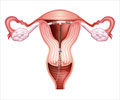
‘Educational attainment at least through lower secondary and contraceptives plays a significant role in lowering fertility rates, especially in countries with high fertility rates.’
Read More..Tweet it Now
The study is published in Population and Development Review.Read More..
Daphne Liu, a doctoral student in statistics, and Adrian Raftery, a UW professor of statistics and sociology, decided to explore two questions: Is increasing contraceptive use or reducing demand more effective in family planning? And, is it the number of years girls attend a school or the overall enrollment of children in school that makes education a factor for fertility?
"Policymakers in countries with high fertility rates are often interested in accelerating their fertility decline since rapid population growth can lead to a number of unwanted economic, environmental and public health consequences," said Liu. "Policies that increase access to education and family planning are generally thought to accelerate fertility decline by empowering individuals, particularly girls and women, to achieve their own desires in life. Our work aims to explore what aspects of a country's education and family planning have the greatest impact on fertility decline."
The world population is projected to touch 10.9 billion by 2100, especially in countries with high-fertility rates like Latin America, Asia, and sub-Saharan Africa. Today's global fertility rate is 2.5 birth per woman but can be as high as four birth per woman. This can exhaust the available resources and hinder long-term economic growth.
Researchers studied the UN data on fertility rates since 1970 and combined it with data on education and contraception to determine the factors that have a major role in birth control.
Advertisement
Contraceptive prevalence reflected the actual use of contraceptives, while unmet need only reflected family planning interest. The results showed that contraceptive prevalence had a significantly greater effect.
Advertisement
School enrollment discouraged families from having more children due to the expenses involved in raising children, while the highest level of education, especially through their early teens, helped women make informed childbearing decisions.
The results showed that completing at least the lower secondary level had a greater effect on fertility decline than completing only primary schooling.
"It is important to know that family planning is so critical," said, Raftery. " However, both factors are important, and they work together. Education gives women more opportunities as alternatives to having large families, while family planning gives them the means to achieve their goals."
Source-Medindia












